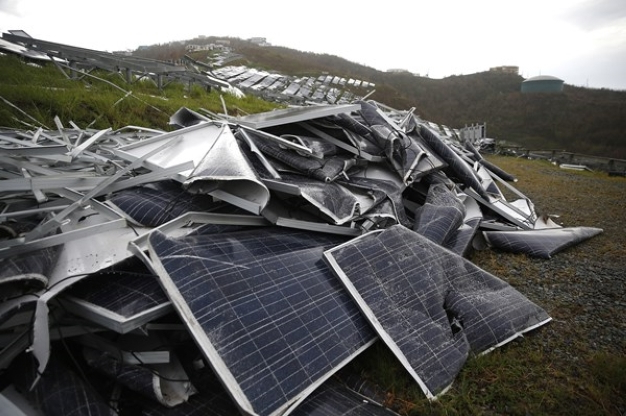The Dark Side of Solar Power

Harvard Business Review
…Tax subsidies are not the only reason for the solar explosion. The conversion efficiency of panels has improved by as much as 0.5% each year for the last 10 years, even as production costs (and thus prices) have sharply declined, thanks to several waves of manufacturing innovation mostly driven by industry-dominant Chinese panel producers. For the end consumer, this amounts to far lower up-front costs per kilowatt of energy generated.
This is all great news, not just for the industry but also for anyone who acknowledges the need to transition from fossil fuels to renewable energy for the sake of our planet’s future. But there’s a massive caveat that very few are talking about.
Panels, Panels Everywhere
Economic incentives are rapidly aligning to encourage customers to trade their existing panels for newer, cheaper, more efficient models. In an industry where circularity solutions such as recycling remain woefully inadequate, the sheer volume of discarded panels will soon pose a risk of existentially damaging proportions.
To be sure, this is not the story one gets from official industry and government sources. The International Renewable Energy Agency (IRENA)’s official projections assert that “large amounts of annual waste are anticipated by the early 2030s” and could total 78 million tonnes by the year 2050. That’s a staggering amount, undoubtedly. But with so many years to prepare, it describes a billion-dollar opportunity for recapture of valuable materials rather than a dire threat. The threat is hidden by the fact that IRENA’s predictions are premised upon customers keeping their panels in place for the entirety of their 30-year life cycle. They do not account for the possibility of widespread early replacement.
Our research does. Using real U.S. data, we modeled the incentives affecting consumers’ decisions whether to replace under various scenarios. We surmised that three variables were particularly salient in determining replacement decisions: installation price, compensation rate (i.e., the going rate for solar energy sold to the grid), and module efficiency. If the cost of trading up is low enough, and the efficiency and compensation rate are high enough, we posit that rational consumers will make the switch, regardless of whether their existing panels have lived out a full 30 years.
As an example, consider a hypothetical consumer (call her “Ms. Brown”) living in California who installed solar panels on her home in 2011. Theoretically, she could keep the panels in place for 30 years, i.e., until 2041. At the time of installation, the total cost was $40,800, 30% of which was tax deductible thanks to the Solar Investment Tax Credit. In 2011, Ms. Brown could expect to generate 12,000 kilowatts of energy through her solar panels, or roughly $2,100 worth of electricity. In each following year, the efficiency of her panel decreases by approximately one percent due to module degradation.




